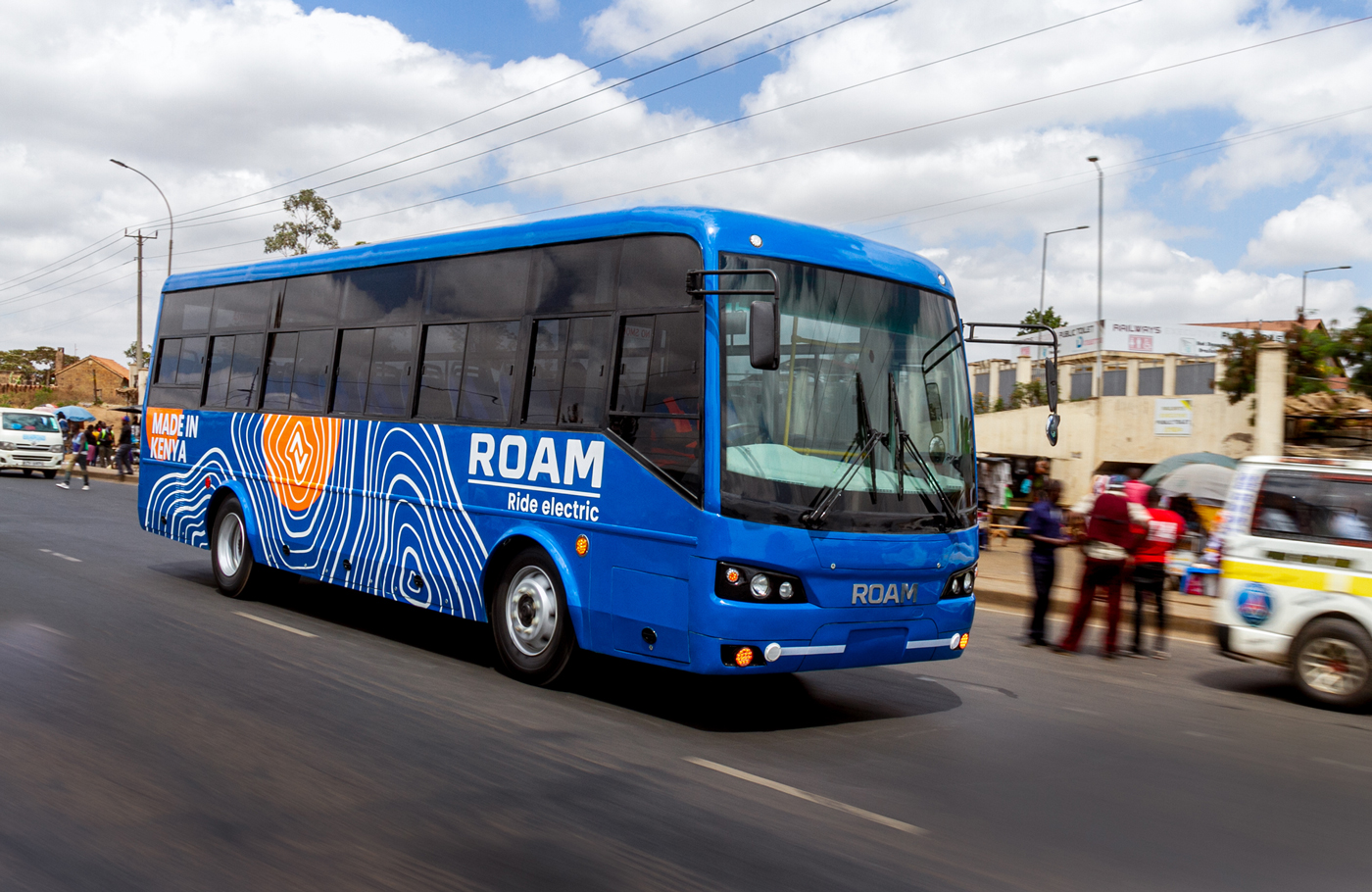EVs ready to roam in Kenya!
EVs ready to roam in Kenya!
Many would say that Africa isn’t ready for electric vehicles (EVs), but Kenya-based EV startup Roam is proving the naysayers wrong.
Marking a major advancement towards sustainable urban transit on the African continent, Roam has announced the launch of its second electric bus: the Move, an electric 42-seater shuttle bus, has been fully designed and assembled in Kenya.
Equipped with a 170-kWh battery pack, the electric shuttle bus can travel 200km on a single charge when completely loaded, and can be fully charged in less than two hours. It weighs 13,500kg, with dimensions of 9,500mm long, 2,500mm high, and 3,200mm wide. The bus, which has a top speed of 80km/h, is also equipped with some wonderful safety features, including collision avoidance systems and advanced driver assistance.
“Roam (formerly Opibus) now plans to ramp up its production of the Move bus, and expand its charging infrastructure as it anticipates a growth in EV bus demand following Kenya’s acceleration of electric vehicle adoption, against the backdrop of skyrocketing fuel prices, and calls for a switch to sustainable transport options,” writes Annie Njanja, a Nairobi-based contributing journalist for online US newspaper TechCrunch, in her piece “Roam unveils new EV bus model to tap Kenya’s mass transit sector”.
Njanja adds that Roam has so far received orders for 50 buses, which it will deliver from February next year. “The 42-seater buses are assembled locally with parts sourced from China, and will cost U$135,000. The bus can also be built to carry 52 people. Roam expects to churn out 40 units a month at full production capacity,” she notes.
Njanja reports that Roam builds its vehicles in line with local requirements, including high ground clearance. She quotes Dennis Wakaba, Roam’s country sales executive: “Building the body locally also enhances our design offering; we can move the door, build more boot space, accommodate preferred window fittings, or add air conditioning, and so on.”


Wakaba’s excitement is evident in the company’s official press release. “We are thrilled to introduce the Roam Move, Kenya’s very own electric shuttle bus. This achievement aligns perfectly with our vision of fostering sustainable transportation solutions that make a positive impact on our environment and our communities,” he enthuses. “The launch of this electric shuttle bus represents not only a significant step forward in our commitment to sustainability but (is) also a testament to the talent and potential within Kenya’s manufacturing industry.”
Njanja adds that the launch of Roam’s Move bus comes after the company revealed plans to launch EV buses to complement its motorcycle production business. “It also follows the launch of Roam Rapid in July, which is meant to tap Kenya’s planned (now stalled) Bus Rapid Transit system, which was intended to be powered by green (electric, hybrid and biodiesel) vehicles,” she writes.
The Rapid is Roam’s first electric bus and the Move’s bigger brother. It weighs 18,000kg, has a battery capacity of 384kWh, can drive 360km on a single charge (taking two hours to charge to full capacity), and can accommodate up to 90 passengers.
Roam has also been recognised by the international community. “It’s been short-listed as finalists for the EarthShot Prize Award, a global environment prize founded by the UK’s Prince William and The Royal Foundation. Roam is the only African electric mobility company to be listed,” writes Breanna Sherman in her piece: “‘There’s no blueprint for how you should do it’ – How Roam is developing EVs for Africa – CEO Filip Lövström”.*
In a press statement, Albin Wilson, chief strategy and product officer at Roam, comments: “We see ourselves as innovators, leaders, and visionaries working with the urgency required to provide an alternative to fuel-based transportation that causes harm to the environment. We are addressing the source of the climate change challenge – carbon emissions – and offering electric mobility a foot to stand on.”
We can’t wait to see more EVs roaming (pun fully intended) the African continent.
* Sherman’s article appeared in Auto Futures, a UK-based international digital content hub dedicated to the future of mobility.
Published by
Focus on Transport
focusmagsa




